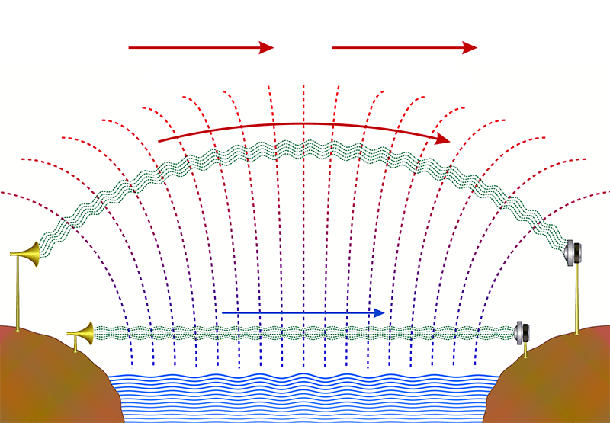When it comes to land-use planning in Ontario, there's more to consider than just the physical landscape. Noise, in its various forms, emerges as a critical factor that can profoundly impact the quality of life within a community. This impact stems from diverse sources, including:
- Transportation Noise Sources: These encompass noise generated by railways, roadways, and air traffic;
- Existing Commercial or Industrial Stationary Noise Sources: Industrial sites or commercial establishments in proximity to proposed developments;
- Stationary Noise Sources from the Proposed Development: Elements like HVAC equipment and exhaust fans within the proposed development can impact both its occupants and the surrounding environment.
In light of these considerations, noise studies emerge as pivotal tools for evaluating and shaping land-use decisions.
These studies offer insights into the feasibility of proposed projects, identify potential noise-related challenges associated with new developments, ensure compliance with municipal and provincial regulations, and provide guidance for implementing necessary noise mitigation measures.
This article will provide a comprehensive exploration of two key concepts in the context of residential development in Ontario: Noise Compatibility Studies and Noise Impact Studies, offering insights into their purposes and methodologies.
Land-Use Compatibility Study
A Land-Use Compatibility Study is an examination of the mutual impacts between new developments and existing commercial or industrial sites. It evaluates the impact of industrial or commercial stationary sources on residential developments, as well as the potential "impacts" of the new development on the existing residential, commercial, and industrial site, possibly necessitating additional mitigation measures.
These Land-Use Compatibility studies are conducted in accordance with provincial Land Use ("D-Series") Guidelines, specifically D-1 (Land Use and Compatibility) and D-6 ("Compatibility Between Industrial Facilities and Sensitive Land Uses").
Guideline D-1 is a guide for land use planning authorities on how to decide whether new development or land uses are appropriate to protect people and the environment. Guideline D 6 is a guide for land use planning authorities on how to decide what types of land uses are appropriate near industrial areas. It provides minimum separation distances (RMSD) and potential areas of influence (AOI) based on the class of the industrial facility.
Land-Use Compatibility Studies start by assessing the size and operations of the commercial/industrial facilities in the general vicinity of the development, applying the appropriate classification per Guideline D-6 and defining zones of influence. Following this assessment, a noise impact study may be required, focusing on addressing the impact of the industrial and commercial facilities on the development.

Noise Study
A Noise Study comes into play when residential development is proposed near stationary and/or transportation noise sources. It is required in various applications, such as Official Plan Amendments, Zoning By-law Amendments, Minor Variance Applications, Subdivision and Condominium Plans, Consents (upon request by the City), Site Plan Control, and other development applications deemed appropriate by the council or delegate.
A Noise Study has a broader scope than a land-use compatibility study. It assesses the impact of all existing noise sources on residential development, including industrial or commercial stationary sources, transportation noise sources, and new noise sources from the proposed development. Additionally, it examines the impact of new sources like HVAC equipment and exhaust fans on the surrounding environment.
The primary goal is to estimate the feasibility of the proposed development and the need for any mitigation measures, which may involve adjustments to the development's layout or design. Moreover, the study provides clarity on whether further studies are required and outlines the timeline for implementing necessary control measures.
As for the noise level limits, municipal noise by-laws may establish specific requirements and/or prohibitions regarding noise emissions, depending on the source type and time periods. In absence of any specific municipal guidelines for addressing noise for land-use planning purposes, noise studies follow the provincial noise control guidelines, NPC-300 (“Environmental Noise Guideline – Stationary and Transportation Noise Sources – Approval and Planning).

The Ontario guidelines specify sound level limits to be respected depending on the type of noise (whether it is stationary noise sources or transportation noise) and the acoustical environment surrounding the development. NPC 300 specify four separate community class areas (Class 1,2,3 and 4) mainly classified by the type of activities and ambient sound level.
For transportation noise, compliance is assessed for the outdoor living area (e.g., backyard, patio, terrace, etc.) and the interior receptors (living room, bedroom, office, classroom, etc.) for the 24-h period divided into daytime and nighttime.. In contrast, stationary sources gauge compliance at the exterior façade and outdoor point of reception, classifying noise criteria for a 24-h period into daytime, evening, and nighttime categories.
To meet the NPC-300 requirements for stationary sources, noise emissions must not exceed the specified exclusion limits or the lowest recorded LAeq,1h, determined through noise monitoring conducted for at least 48 hours during the day, evening, and nighttime periods, whichever value is higher.
Assessing Rail Vibration Impact?
The "Guidelines for New Development in Proximity to Railway Operations," jointly published by the Federation of Canadian Municipalities (FCM) and the Railway Association of Canada (RAC), outlines the necessity for a vibration study when proposed dwelling units are located within 75 meters of the railway right-of-way. This study encompasses onsite measurements and predictions of interior vibration levels. If estimated vibration levels surpass the limit, appropriate vibration isolation measures must be implemented.




